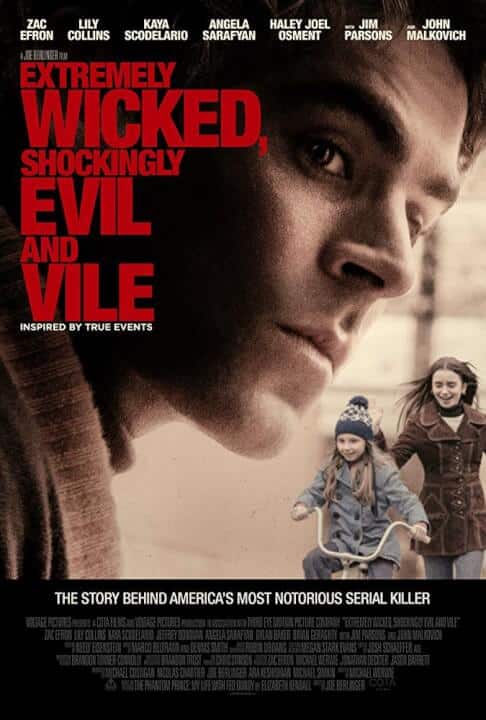Horror- a film that is created to entertain by scaring the audience. Usually, horror can be gory which means LOTS of special effects makeup whether it's blood, gashes, etc.
Thriller- a film intended to scare with suspense.
Common camera angles, shots, and movements in a horror film:
1. Bird's eye view/high angle- these are usually used to show someone on the ground, possibly vulnerable to whatever is above it.
2. Close up- used to show the reactions of the characters.
3. Tracking shot- shows someone being followed.
4. Tilt- can signify a supernatural being.
5. Low angle- shows how intimidating a protagonist is.
6. Hand held- makes the film more realistic; ex. Blair Witch Project
7. POV- the audience is able to be scared exactly like the character
8. Over the shoulder- builds tension, can sometimes signify someone standing behind a person.
Common camera angles, shots, and movements in a thriller:
1. Establishing shot- sets an eerie mood.
2. Tracking shot- shows someone being followed.
3. Close up- used to show the reactions of the characters.
4. Tilt- can signify a supernatural being.
5. Over the shoulder- builds tension, can sometimes signify someone standing behind a person.
Mis en scene in horror movies:
Costumes- sometimes costumes can be very specific to the movie. What I mean by this is that if it's a horror movie with a supernatural protagonist such as Pennywise, the costume will obviously be a clown suit but the supporting characters may have on regular clothes.
Lighting- dark, eerie lighting.
Actors- actors usually vary but the most common thing they do is scream and fight.
Makeup- lots of special effects are used to add to the gory effect of the movie.
Props- whether it's used by the protagonist or the antagonist, there's always weapons used.
Setting- a lot of times in a made up town when including a supernatural being; sometimes secluded.
Mis en scene in thriller movies:
Costumes- usually regular clothes
Lighting- dark, eerie lighting.
Actors- actors usually vary but the most common thing they do is scream and fight.
Makeup- can show dirt or bruises from being chased and fighting back.
Props-whether it's used by the protagonist or the antagonist, there's always weapons used.
Setting- settings vary; sometimes secluded.
Common sounds and editing of horror and thrillers:
1. Diegetic sound- when the actor is quiet and you can hear all of their surroundings.
2. Non diegetic- the sounds of weapons, sounds of supernatural being.
3. Sound Motif
4. Incidental Music- suspenseful music.
5. Dialogue
IT (2017)
Scary Stories to Tell in the Dark (2019)
The Conjuring (2013)
Ouija (2014)
Examples of thrillers:
Us (2019)

Extremely Wicked, Shockingly Evil and Vile (2019)
A Quiet Place (2018)
Split (2016)
Elements liked and disliked about thrillers and horror movies:
Our group as a whole enjoys everything about thrillers and horror films. Our favorite aspect of them are the ability to scare and create suspense. In order to do this, all of the elements listed in this blog must contribute.
Thriller- a film intended to scare with suspense.
Common camera angles, shots, and movements in a horror film:
2. Close up- used to show the reactions of the characters.
3. Tracking shot- shows someone being followed.
4. Tilt- can signify a supernatural being.
5. Low angle- shows how intimidating a protagonist is.
6. Hand held- makes the film more realistic; ex. Blair Witch Project
7. POV- the audience is able to be scared exactly like the character
8. Over the shoulder- builds tension, can sometimes signify someone standing behind a person.
Common camera angles, shots, and movements in a thriller:
1. Establishing shot- sets an eerie mood.
2. Tracking shot- shows someone being followed.
3. Close up- used to show the reactions of the characters.
4. Tilt- can signify a supernatural being.
5. Over the shoulder- builds tension, can sometimes signify someone standing behind a person.
Mis en scene in horror movies:
Costumes- sometimes costumes can be very specific to the movie. What I mean by this is that if it's a horror movie with a supernatural protagonist such as Pennywise, the costume will obviously be a clown suit but the supporting characters may have on regular clothes.
Lighting- dark, eerie lighting.
Actors- actors usually vary but the most common thing they do is scream and fight.
Makeup- lots of special effects are used to add to the gory effect of the movie.
Props- whether it's used by the protagonist or the antagonist, there's always weapons used.
Setting- a lot of times in a made up town when including a supernatural being; sometimes secluded.
Mis en scene in thriller movies:
Costumes- usually regular clothes
Lighting- dark, eerie lighting.
Actors- actors usually vary but the most common thing they do is scream and fight.
Makeup- can show dirt or bruises from being chased and fighting back.
Props-whether it's used by the protagonist or the antagonist, there's always weapons used.
Setting- settings vary; sometimes secluded.
Common sounds and editing of horror and thrillers:
1. Diegetic sound- when the actor is quiet and you can hear all of their surroundings.
2. Non diegetic- the sounds of weapons, sounds of supernatural being.
3. Sound Motif
4. Incidental Music- suspenseful music.
5. Dialogue
6. Cutaway
7. Eye- line match
8. Jump cut
9. Reaction shot
Examples of horror films:
Scary Stories to Tell in the Dark (2019)
The Conjuring (2013)
Ouija (2014)
Examples of thrillers:
Us (2019)

Extremely Wicked, Shockingly Evil and Vile (2019)
A Quiet Place (2018)
Split (2016)
Elements liked and disliked about thrillers and horror movies:
Our group as a whole enjoys everything about thrillers and horror films. Our favorite aspect of them are the ability to scare and create suspense. In order to do this, all of the elements listed in this blog must contribute.







No comments:
Post a Comment